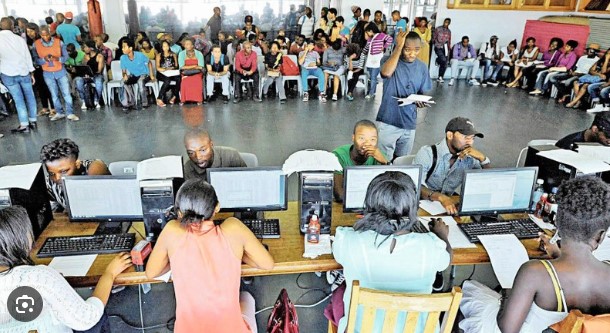
Revolutionizing Higher Education Funding: The DA’s Innovative Alternatives to NSFAS
Introduction:
Access to quality higher education is a fundamental right that should be available to all. Recognizing the challenges faced by students in financing their education, the Development Alternatives (DA) party has proposed groundbreaking alternatives to the current National Student Financial Aid Scheme (NSFAS) model. These innovative solutions aim to transform the landscape of higher education funding, ensuring greater accessibility and sustainability for students across the country.

- Expanding the Bursary System:
The DA’s first alternative focuses on expanding the bursary system to provide more comprehensive financial assistance to students. By increasing the number and value of bursaries available, deserving students from diverse backgrounds can receive the support they need to pursue their educational aspirations. This approach ensures that financial aid is targeted to those who need it most, creating a fairer and more equitable system. - Implementing Income-Contingent Loans:
Another groundbreaking alternative proposed by the DA is the implementation of income-contingent loans. This approach allows students to access funding for their education without immediate financial burden. Repayments are based on a percentage of their future income, ensuring that graduates only start repaying their loans once they are earning a sustainable income. This system alleviates the pressure on students and promotes a smoother transition from education to the workforce. - Increasing Public-Private Partnerships:
Recognizing the need for additional funding sources, the DA advocates for increased public-private partnerships in higher education funding. By leveraging the resources and expertise of private entities, more financial support can be provided to students. These partnerships can take various forms, such as scholarships, sponsorships, and research grants. Collaborations between academia and industry not only provide financial aid but also foster valuable connections and opportunities for students. - Enhancing Financial Literacy Programs:
The DA’s alternative also emphasizes the importance of financial literacy programs. By equipping students with knowledge and skills related to budgeting, debt management, and financial planning, they can make informed decisions regarding their education and future financial obligations. Empowering students with financial literacy education ensures they are better prepared to navigate the complex world of higher education financing. - The DA’s innovative alternatives to the current NSFAS model offer a promising vision for the future of higher education funding. By expanding the bursary system, implementing income-contingent loans, increasing public-private partnerships, and enhancing financial literacy programs, these proposals aim to create a more accessible and sustainable system. Through these transformative changes, the DA . Strengthening Accountability and Transparency:
- In order to ensure the effectiveness and integrity of the proposed alternatives, the DA emphasizes the importance of accountability and transparency. They propose the establishment of a robust monitoring and evaluation system to track the impact of the funding initiatives. This system would provide regular reports on the disbursement of funds, the number of beneficiaries, and the outcomes achieved. By holding all stakeholders accountable, including government, private partners, and educational institutions, the DA aims to build trust and confidence in the new funding model.
- Fostering Collaboration with Institutions:
- The DA recognizes the crucial role that educational institutions play in the success of these alternatives. They propose fostering closer collaboration between the government, universities, and colleges to develop tailored financial aid programs that meet the specific needs of their students. By involving these institutions in the design and implementation of the funding initiatives, the DA ensures that the solutions are responsive to the unique challenges faced by students in different academic disciplines and institutions.
READ : Revolutionizing Higher Education Funding: The DA’s Innovative Alternatives to NSFAS
8. Promoting Innovation in Funding Models:
The DA encourages exploring innovative funding models beyond traditional approaches. They advocate for the exploration of income-sharing agreements, where investors provide upfront funding for students in exchange for a percentage of their future income. This model aligns the interests of students and investors, as both parties benefit from the student’s success in the job market. By embracing such innovative approaches, the DA aims to diversify the funding options available to students and foster a more dynamic and sustainable higher education financing ecosystem.
Conclusion:
The DA’s innovative alternatives to the current NSFAS model present a comprehensive and forward-thinking approach to higher education funding. By expanding the bursary system, implementing income-contingent loans, increasing public-private partnerships, enhancing financial literacy programs, strengthening accountability and transparency, fostering collaboration with institutions, and promoting innovation in funding models, the DA seeks to revolutionize the way students access and finance their education. These alternatives hold the potential to create a more inclusive, equitable, and sustainable higher education system, empowering students to pursue their academic dreams without the burden of financial constraints.
Leave a Reply